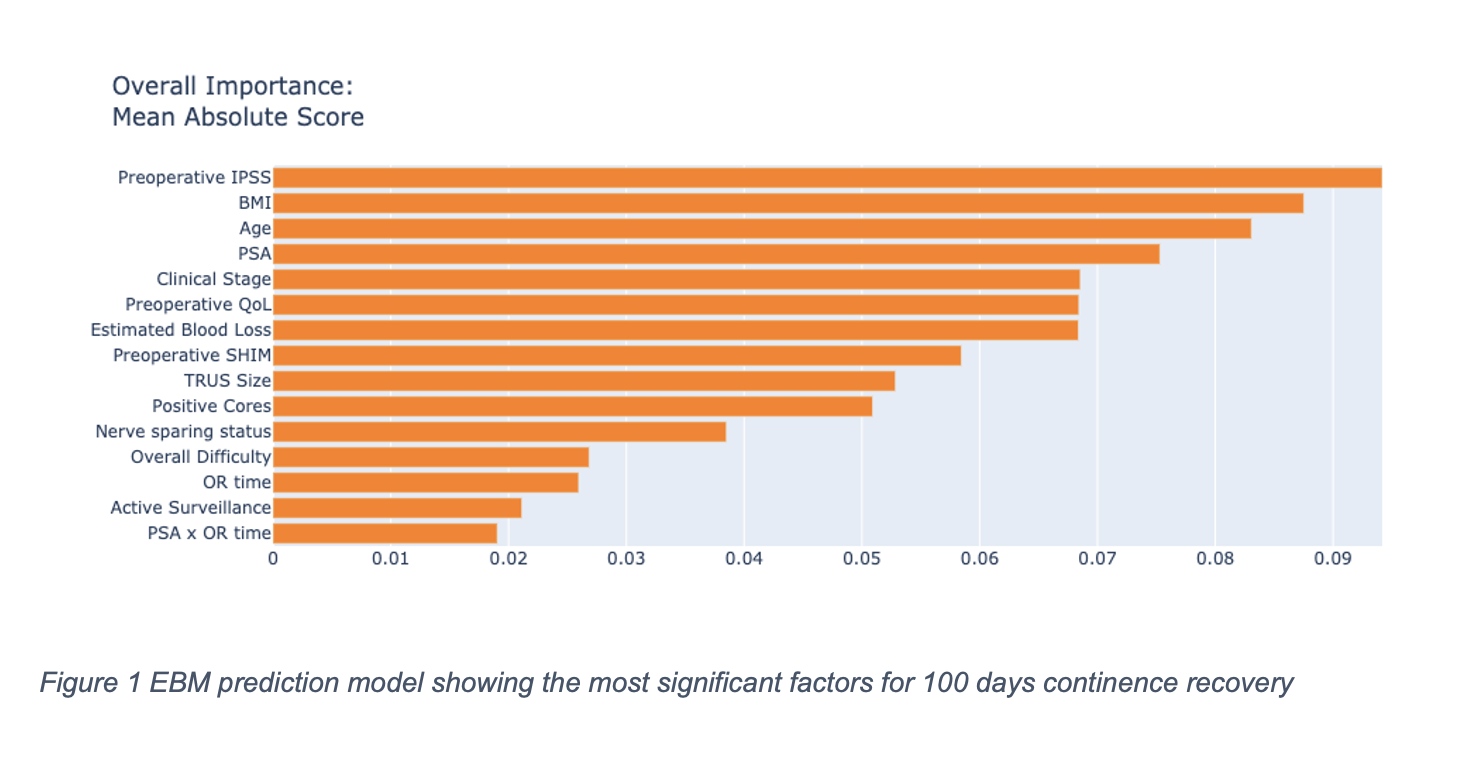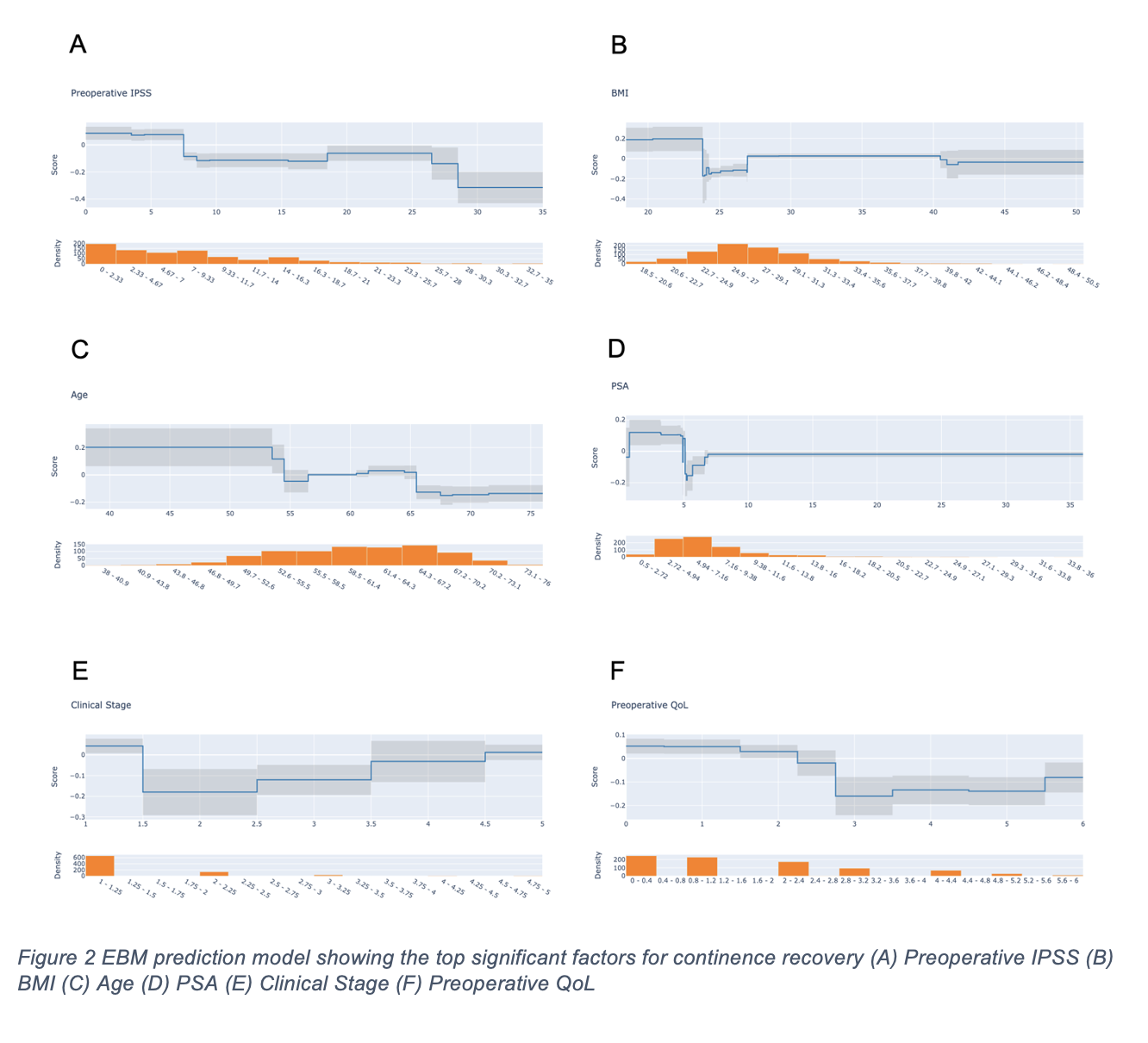Back
Poster, Podium & Video Sessions
Moderated Poster
MP57: Prostate Cancer: Localized: Surgical Therapy IV
MP57-14: Machine Learning Prediction of Continence Recovery of Robotic-Assisted Radical Prostatectomy
Monday, May 16, 2022
10:30 AM – 11:45 AM
Location: Room 225
Adel Arezki*, Iman Sadri, David-Dan Nguyen, Montreal, Canada, Ahmed S. Zakaria, Thunder Bay, Canada, Assaad Elhakim, Malek Meskawi, Pierre Karakiewicz, Kevin C. Zorn, Montreal, Canada
- AA
Adel Arezki
McGill University
Poster Presenter(s)
Introduction: Benign prostate hyperplasia affects more than 70% of patients aged 80 years old and older and has significant implications, social and economic on the current healthcare system. The primary aim of this study was to develop a machine learning model to predict continence recovery at 100 days after undergoing RARP.
Methods: A retrospective review was performed on a prospectively maintained database of 1737 patients who underwent RARP for localized prostate cancer between 2007 and 2019. Different machine learning and non-machine learning approaches, including logistic regression (LR), classification tree (CT) and support vector machine (SVC) were used to build prediction models. Each method was then evaluated for their accuracy and interpretability.
Results: 1376 patients were included in the Explainable Boosting Machine model. The model’s area under precision-recall curve (PR-AUC) prediction using this method outperformed other methods such as logistic regression(PR-AUC = 0.5873), classification tree (PR-AUC = 0.5668) and support vector machine (PR-AUC = 0.5607). Preoperative IPSS score, bmi, age, preoperative PSA score as well as clinical stage were, in order, the most significant factors in continence recovery at 100 days (figure 1, figure 2).
Conclusions: Using Explainable Boosting Machine analysis confirmed and quantified the contribution to several previously described factors for continence recovery. Furthermore, we showed in this study that EBM outperforms other commonly used models such as support vector machine and logistic regression.
Source of Funding: None


Methods: A retrospective review was performed on a prospectively maintained database of 1737 patients who underwent RARP for localized prostate cancer between 2007 and 2019. Different machine learning and non-machine learning approaches, including logistic regression (LR), classification tree (CT) and support vector machine (SVC) were used to build prediction models. Each method was then evaluated for their accuracy and interpretability.
Results: 1376 patients were included in the Explainable Boosting Machine model. The model’s area under precision-recall curve (PR-AUC) prediction using this method outperformed other methods such as logistic regression(PR-AUC = 0.5873), classification tree (PR-AUC = 0.5668) and support vector machine (PR-AUC = 0.5607). Preoperative IPSS score, bmi, age, preoperative PSA score as well as clinical stage were, in order, the most significant factors in continence recovery at 100 days (figure 1, figure 2).
Conclusions: Using Explainable Boosting Machine analysis confirmed and quantified the contribution to several previously described factors for continence recovery. Furthermore, we showed in this study that EBM outperforms other commonly used models such as support vector machine and logistic regression.
Source of Funding: None



.jpg)
.jpg)